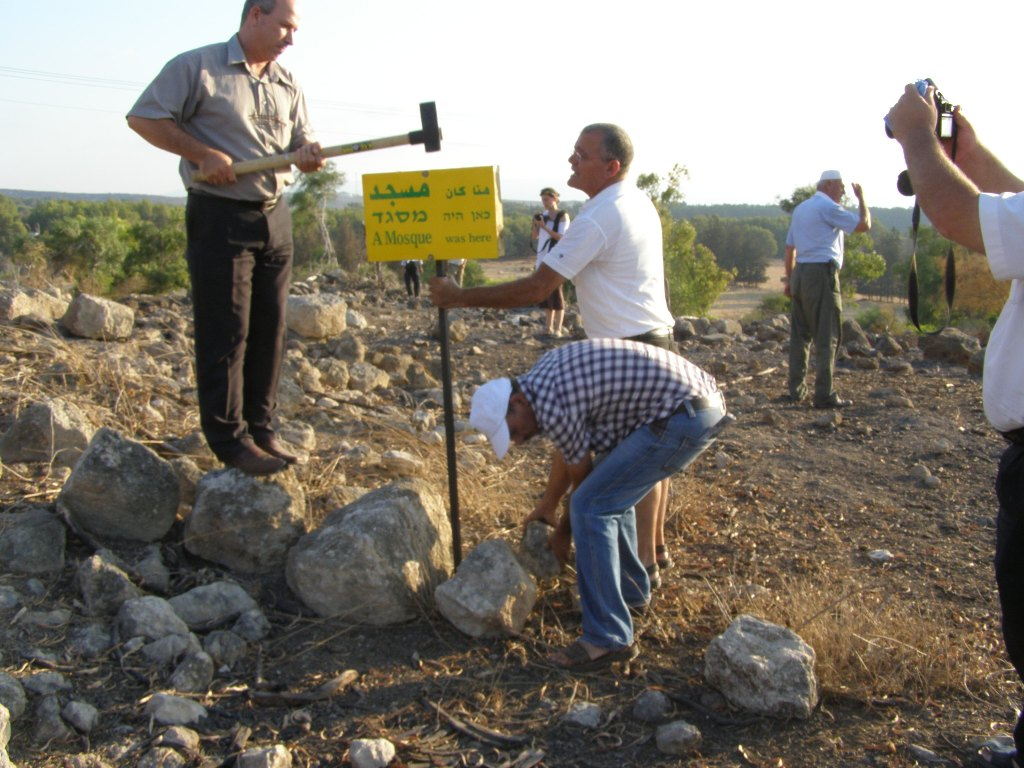Saturday, 15.8.09
More than one hundred people participated in Zochrot’s tour to the destroyed village of al-Damun last Saturday. About twenty of the village’s refugees and members of their families led the group through the village’s neighborhoods, among the ruins of the buildings. A recent fire in the area exposed the building stones that were scattered over the charred hillside. The ash and burnt remains of the fire made it seem as if the Nakba and the destruction had only just occurred.
The tour began at the eastern end of the village, between the Christian cemetery and the eastern Moslem cemetery. Some of the refugees live today about two kilometers to the east, in the neighboring village of Kabul. The head of Kabul’s local council, the son of a refugee family from al-Damun, also joined the tour.
The refugees on the tour came from different families, and had been born in different neighborhoods.
The competition among them was obvious – displaying their knowledge; deciding which story to stress; choosing who would tell it. They argued about the exact location of the mosque, the exact name of the mukhtar, the boundary of the eastern neighborhood. They brought the charred remains to life. The remains belonged to them, and their arguments were serious and emotional. Sixty-one years after their Nakba, they continue to refer to their property in the present tense. Their pain is evident as they speak.
One of the refugees points to where he now lives, in the nearby town of Tamra. From his porch he can see the ruins of his former home and his destroyed village. Another refugee said that only today did he discover the location of the house in which he was born in 1945. A 75-year-old woman told us that this was the first time she had returned to al-Damun since she left in 1948. The mosque and church weren’t far from one another. We erected signs to mark their location, as well as the location of the school, the western cemetery and the road from al-Damun to al-Birwa, the adjacent village (the birthplace of Mahmud Darwish, the poet), which Israel also destroyed. We crossed the village to its western edge, to the al-Damun spring. Until 1948 it was a major water source for the villagers, for residents of the area, for passers-by and merchants who passed through al-Damun on their way to Syria and Lebanon, and on their way back. All those who participated in the tour received a copy of the booklet, “Remembering al-Damun,” prepared especially for the occasion.
The refugees requested many additional copies to send to those who were exiled from their land and now live in other countries.
Most of them are in Lebanon, and some are in Europe and the United States. “This booklet will reach Canada,” said one of the refugees. In 1948 lived in al-Damun more than 1500 residents. About half of them remained in Israel, and, together with their descendents, live nearby, but they’re forbidden to return and are unable to reclaim their property.



